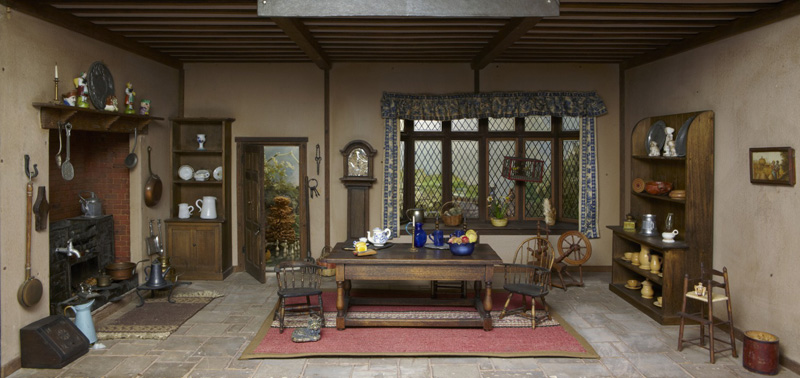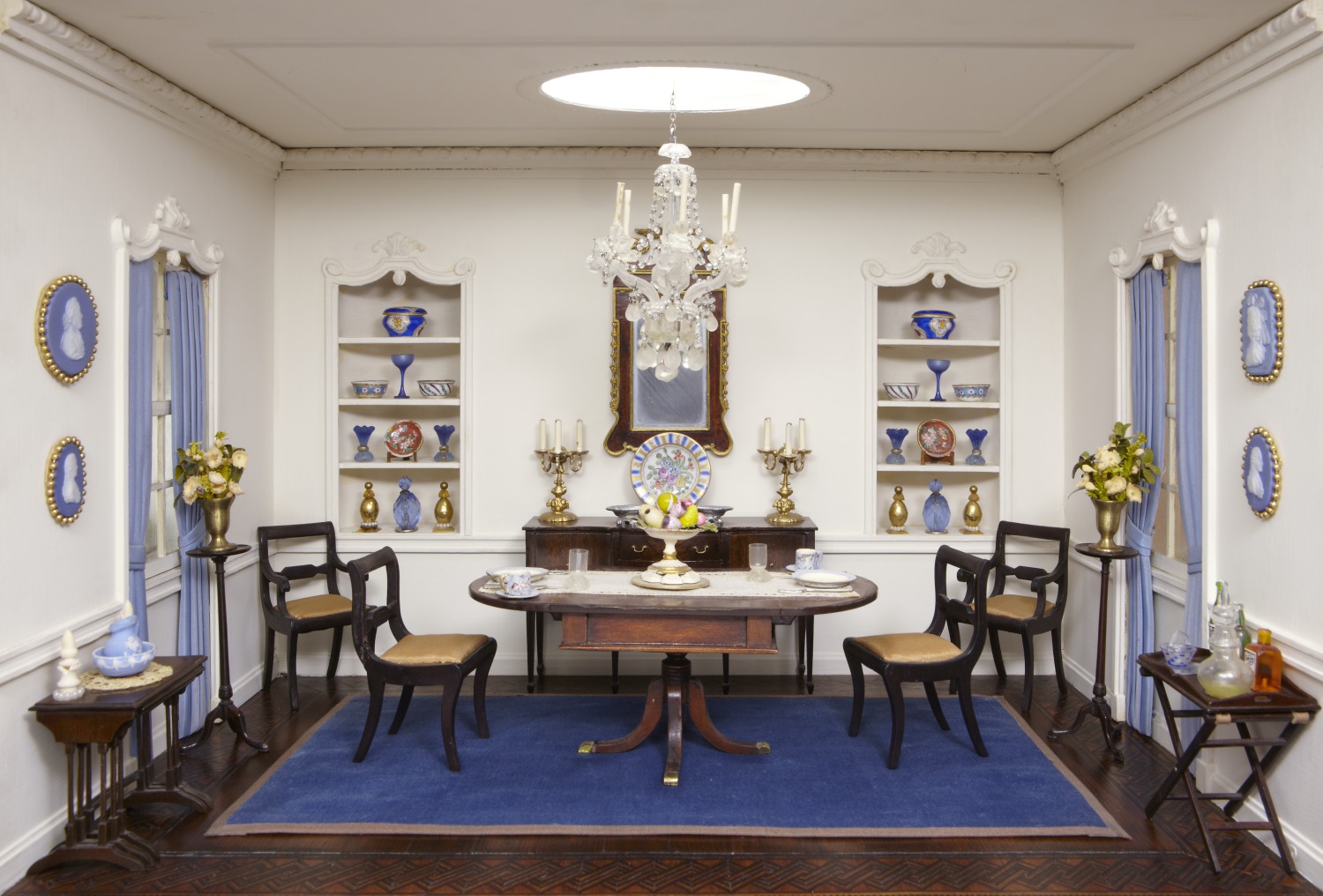The Thorne Rooms represent a fascinating world in miniature. Created at an exacting scale of one inch to one foot, several of the rooms replicate actual spaces found in the United States and Europe, while the remainder were inspired by the architecture and interior design of their respective periods and countries.
The rooms were conceived, designed, and in large part crafted by Narcissa Niblack Thorne (1882-1966). An Indiana native, Thorne began to collect miniature furniture and household accessories during her travels to England and Asia shortly after the turn of the 20th century.

Narcissa Niblack Thorne, English Lodge Kitchen, c. 1840-1850, 1932-1937. Miniature room. Gift of Niblack Thorne.
Beginning in 1930, Thorne commissioned interiors scenes to contain her growing collection of miniature objects. At their tiny scale, some of the rooms even contain period-style rugs Thorne had woven specifically for each space. Thorne and the craftspeople with whom she worked completed nearly 100 rooms. Her hope was that perfectly proportioned rooms in miniature could substitute for costly and space-consuming full-scale period rooms that museums across the country were beginning to acquire. They also reflect the architectural revivals that were popular among wealthy patrons for their homes and which were publicized in the shelter magazines of the period.
The original 30 Thorne Miniature Rooms were displayed at the 1933 Chicago Century of Progress Exposition and they gained national attention when featured in a 1940 LIFE Magazine article. In 1962, Thorne donated 20 of the original 30 rooms to a fledgling Phoenix Art Museum, then celebrating its third anniversary. The rooms have been on view ever since. Other examples of the Thorne Miniature Rooms can be seen at the Art Institute of Chicago (68) and the Knoxville Museum of Art (9).
Header: Narcissa Niblack Thorne, American Federal Dining Room, c. 1800, 1940-1960. Mixed media. Gift of Mr. and Mrs. Niblack Thorne.
EXHIBITION SPONSORS
All exhibitions at Phoenix Art Museum are underwritten by the Phoenix Art Museum Exhibition Excellence Fund, founded by The Opatrny Family Foundation with additional major support provided by Joan Cremin.
